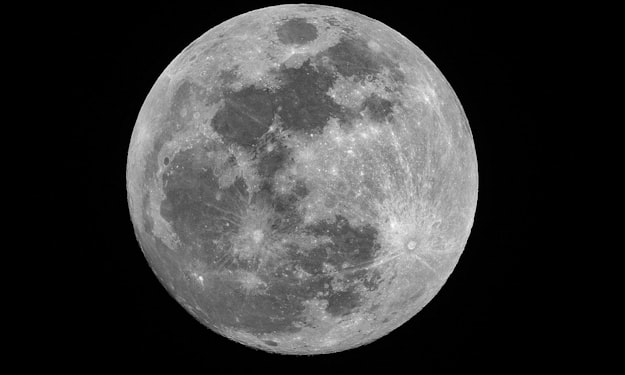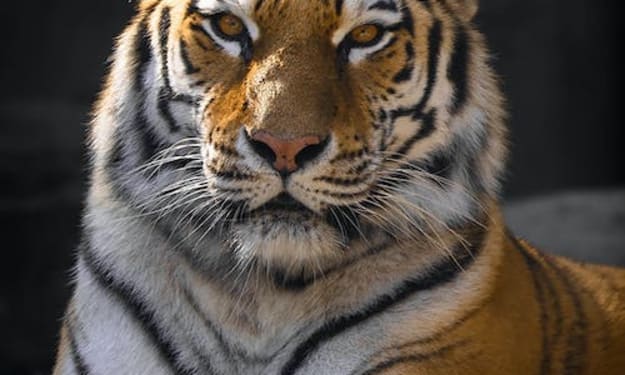
Ajith Kumar
Bio
Good story teller about Sci-Fi, Adventure, thriller
Good in Pet Fishes and Pet Birds detailes
Good in General Facts
Stories (27/0)
Unveiling the Wonders of the Moon: A Journey into Earth's Mysterious Satellite
The Moon is Earth's only natural satellite and is the fifth-largest moon in the Solar System. It is about 1/6th the size of Earth, with a diameter of approximately 3,474 kilometers (2,159 miles). The Moon is about 384,400 kilometers (238,900 miles) away from Earth, on average. It takes the Moon approximately 27.3 days to complete one orbit around the Earth. This period is known as the sidereal month. The Moon's gravity is about 1/6th of Earth's gravity, which means a person weighing 60 kilograms (132 pounds) on Earth would weigh approximately 10 kilograms (22 pounds) on the Moon. The Moon does not have an atmosphere, which means it lacks weather, wind, and erosion. It also means there is no sound on the Moon, as sound requires a medium to travel through. The Moon's surface is covered in craters, mountains, valleys, and basins. The large round depressions, called impact craters, were formed by collisions with asteroids and comets over billions of years. The Moon has no liquid water on its surface, but scientists have found evidence of water ice in permanently shadowed regions near the lunar poles. The Moon experiences phases due to its position relative to the Sun and Earth. The phases include new moon, crescent, first quarter, gibbous, full moon, and waning phases. The Moon has been visited by humans. The first crewed mission to the Moon was Apollo 11 in 1969, and a total of six Apollo missions landed astronauts on the Moon between 1969 and 1972. The Moon has a relatively low density compared to Earth, indicating that it has a smaller iron core. Its composition is primarily made up of rocks, such as basalt and anorthosite. The Moon's surface is covered in a layer of fine, powdery soil called regolith, which is the result of billions of years of meteorite impacts breaking down the rocks. The Moon's rotation is synchronized with its orbit around Earth, which means it always shows the same face to us. This phenomenon is known as "tidal locking." The Moon has no magnetic field of its own. However, small pockets of magnetism have been detected on its surface, likely remnants from when the Moon had a magnetic field in the past. The temperature on the Moon's surface can vary significantly. During the day, temperatures can reach about 127 degrees Celsius (261 degrees Fahrenheit), while at night, they can drop to around -173 degrees Celsius (-280 degrees Fahrenheit). The Moon has been instrumental in shaping Earth's tides. Its gravitational pull causes the oceans to bulge, creating high and low tides as Earth rotates on its axis. The Moon has a very thin atmosphere called an exosphere. It is composed of extremely low-density gases, including helium, neon, and hydrogen, but it is so thin that individual molecules can escape into space. Moonquakes, similar to earthquakes on Earth, have been detected on the Moon. They are generally much weaker but can last longer due to the Moon's rigid structure. The Moon's surface is heavily cratered, but it also has large flat areas known as maria (Latin for "seas"). These regions were once thought to be filled with water but are actually ancient basaltic lava flows. The Moon has been a source of inspiration for art, literature, and mythology throughout history. It has been a symbol of beauty, romance, and mystery in various cultures worldwide. The Moon's gravity affects Earth's axial tilt, which is responsible for the stability of our planet's climate. Without the Moon's stabilizing influence, Earth's tilt could vary significantly over time, leading to extreme climate changes. The Moon has been used as a calibration target for telescopes and cameras. By capturing images of the Moon, astronomers can assess the resolution and performance of their instruments. Lunar eclipses occur when the Earth passes between the Sun and the Moon, casting a shadow on the Moon's surface. There are three types of lunar eclipses: total, partial, and penumbral. The Moon has been visited by unmanned spacecraft from various countries. Apart from the Apollo missions, robotic missions such as the Soviet Union's Luna program and NASA's Lunar Reconnaissance Orbiter have provided valuable data about the Moon's surface and environment. The Moon's formation is believed to have resulted from a collision between early Earth and a Mars-sized object called Theia. This impact is thought to have ejected material that eventually coalesced to form the Moon.
By Ajith Kumarabout a year ago in Earth
A Journey into Nature's Fascinating Giants
Introduction: Ostriches are truly remarkable creatures, known for their impressive size, unique adaptations, and captivating behavior. These flightless birds have captivated the imagination of humans for centuries. In this article, we will delve into the fascinating world of ostriches, exploring their physical characteristics, behavior, and their significance in both the animal kingdom and human culture.
By Ajith Kumarabout a year ago in Petlife
Unveiling the Majestic Splendor of Thanjavur's Chola Architectural Gem
Thanjavur Temple: A Marvel of Chola Architecture Introduction: Nestled in the heart of Tamil Nadu, India, the Brihadeeswarar Temple, commonly known as the Thanjavur Temple, stands as a testament to the architectural brilliance of the Chola dynasty. Built over a thousand years ago, this UNESCO World Heritage Site continues to captivate visitors with its grandeur, intricate craftsmanship, and spiritual significance. Let us embark on a journey through time and explore the magnificent Thanjavur Temple.
By Ajith Kumarabout a year ago in Wander
The Taj Mahal: An Eternal Love Story in Marble
The Taj Mahal: A Timeless Testament of Love and Architectural Mastery The Taj Mahal, an architectural masterpiece and one of the world's most iconic landmarks, stands as a symbol of eternal love and breathtaking beauty. Located in Agra, India, this magnificent mausoleum has captivated the hearts and minds of people across the globe for centuries. In this article, we explore the history, significance, and enchanting allure of the Taj Mahal.
By Ajith Kumarabout a year ago in Wander
Unleashing the Power of Nature's Black Gold for Sustainable Gardening
Vermicompost: Nature's Black Gold for Sustainable Gardening Introduction In the world of gardening and agriculture, the quest for organic and sustainable practices is gaining momentum. One such practice that has been gaining popularity is vermicomposting. Also known as worm composting, vermicomposting is the process of using specialized worms to break down organic waste into nutrient-rich compost. This article delves into the fascinating world of vermicompost, exploring its benefits, the process, and how it contributes to sustainable gardening practices.
By Ajith Kumarabout a year ago in Earth
The Power of Human Connection: Exploring the Importance of Social Bonds
Introduction In today's fast-paced and interconnected world, it's easy to get caught up in the whirlwind of technology and prioritize virtual interactions over real-life connections. However, it's essential to recognize the inherent value and power of human connection. Our social bonds have a profound impact on our well-being, happiness, and overall quality of life. In this article, we delve into the significance of human connection and explore the various ways it enriches our lives.
By Ajith Kumarabout a year ago in Journal
Unlocking the Secrets of Sleep: Unveiling the Stages for Optimal Rest and Rejuvenation
Sleep is a complex physiological process that consists of multiple stages, each characterized by distinct patterns of brain activity, eye movements, and muscle tone. These stages can be broadly categorized into two main types: Non-rapid eye movement (NREM) sleep and rapid eye movement (REM) sleep. Let's explore each stage in more detail:
By Ajith Kumarabout a year ago in Education
Top Guard Dog Breeds: Powerful Protectors for Your Home and Family
When it comes to selecting the best guard dogs, several breeds are known for their protective instincts and ability to excel in guarding and protecting properties. However, it's important to note that a dog's individual temperament, training, and socialization play significant roles in their effectiveness as guard dogs. Here are some popular breeds often considered good guard dogs:
By Ajith Kumarabout a year ago in Petlife














